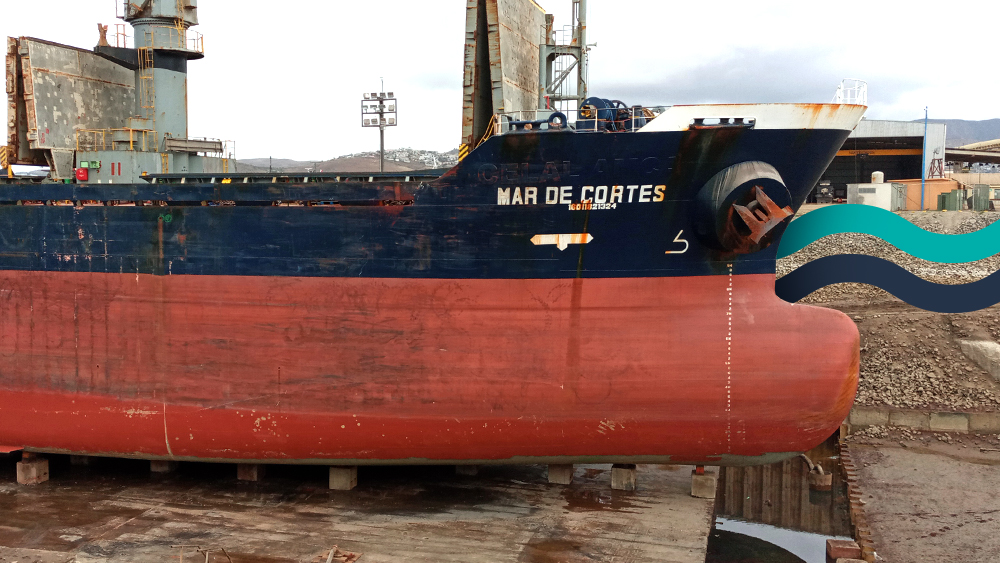Mexico’s maritime infrastructure stands out as one of the most significant in all of Latin America, driving the country’s economy and trade. But how many ports in Mexico? The answer is impressive: a total of 117 ports strategically distributed along its extensive coastline along the Gulf of Mexico, the Pacific Ocean and the Caribbean Sea. These connection points not only link Mexico with more than 145 countries, but also establish crucial links with commercial powers such as China and the United States, as well as with Latin American nations.
This port network is divided into two main categories: commercial ports, which are the epicenter of cargo traffic, and tourist ports, authentic oases for maritime tourism. Want to explore this fascinating infrastructure in more depth? We invite you to take a look at our Mexico sea port list.
Major sea ports in Mexico
Seaports in the Gulf of Mexico
The Gulf of Mexico is home to a strategic network of ports that are true engines of the Mexican economy. Topping the list is the imposing Port of Veracruz, considered the epicenter of maritime trade in the country. Located on the east coast, this port colossus is the first choice for the entry and exit of goods, with an annual flow that exceeds an impressive 20 million tons. With connections spanning more than 50 nations, Veracruz is vital for the import of automobiles, appliances and agricultural products.
A few steps away, the Port of Altamira stands as the second most important. Sheltered on the north coast, it is a fundamental pillar in the export of oil and agricultural products. Its role as the epicenter of the Mexican oil industry is undeniable, as well as its contribution to the export of corn, sorghum and cotton.
Turning northwest, we encounter the charm of Progreso. This port, third in importance, not only opens its doors to tourism with white sand beaches and crystalline waters, but also establishes itself as a vital export center for fruits and vegetables.
In addition to these, ports such as Tampico, Coatzacoalcos and Tuxpan stand out in this region.

Seaports in the Mexican Pacific Ocean
Mexico’s Pacific Ocean coast is also home to a number of seaports of vital importance to the country’s economy. At the center of this panorama, the Port of Ensenada emerges as a prominent player. Located on the northwest coast, its relevance in the maritime and commercial context cannot be underestimated. Ensenada plays a key role in the import and export of perishable goods and automobiles, standing out as the primary entry point for sensitive goods, such as fruits and vegetables, and as a major automobile export center.
On Mexico’s west Pacific coast, the Port of Manzanillo takes center stage. As one of Mexico’s largest ports, Manzanillo is a crucial node in trade distribution to Asia. Its function as the main entry point for electronics, textiles and automobiles, as well as its prominent role in the export of agricultural products, makes it an essential cog in the web of international trade.
A step to the south, the Port of Lázaro Cárdenas is another pillar of Mexican maritime trade. Recognized for its importance in the export of petroleum and agricultural products, especially corn, sorghum and cotton, Lázaro Cárdenas contributes significantly to the flow of national and international merchandise.
In conjunction with these ports, other important facilities in the region, such as Guaymas, Topolobampo, Mazatlán, Salina Cruz and Chiapas, complement the Mexican Pacific port landscape.

Seaports in the Mexican Caribbean Sea
Mexico’s Caribbean coastline is home to a network of seaports vital to regional trade and tourism. At the epicenter is the Port of Cozumel, on the east coast of the Yucatan Peninsula. Noted for its tourism and cruise ship activity, Cozumel receives more than 2 million passengers annually.
To the northwest, the Port of Progreso, second in importance, focuses on the export of agricultural products and is also a tourist attraction.
To the north, the Port of Chetumal emerges as a node for the export of agricultural products and an important trade center with Central America.
Complementing this network are the ports of Isla Mujeres, Playa del Carmen and Cancun, which stand out as both tourist destinations and agricultural export centers. Together, they boost tourism and the local economy, contributing to growth in the Mexican Caribbean Sea region.
ISP: your boat yards in Ensenada Mexico
Strategically located in Mexico’s most relevant port, the Port of Ensenada, and only 110 kilometers from the U.S. border, Infraestructura y Servicios Portuarios (ISP) stands as the largest shipyard Ensenada Mexico. With the unique status of operating year-round, Ensenada plays a key role in bi-national trade.
ISP is a benchmark in the shipbuilding industry, with an unwavering commitment to environmental policy and quality excellence. We offer a wide range of specialized services, including repair, maintenance, recycling and shipbuilding. Our facility has the largest dry dock capacity on the Mexican Pacific coast, in addition to a dock dedicated to deep draft ship repairs.
Our mission is to ensure the safety and efficiency of your fleet. Feel free to contact us today for detailed information about our services and an accurate assessment of the ship repair Ensenada cost. At ISP, we are committed to keeping your fleet in top operating condition.


